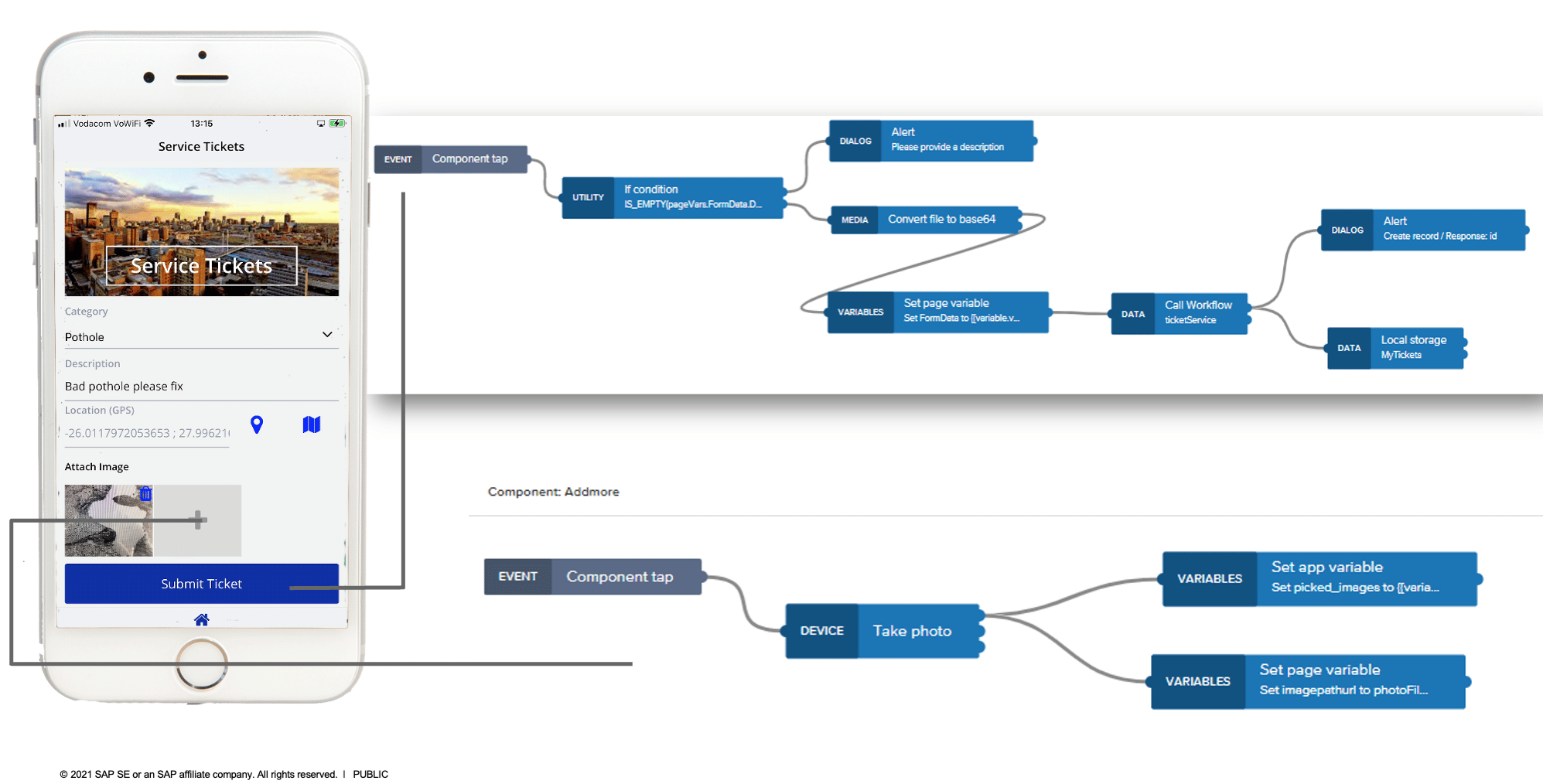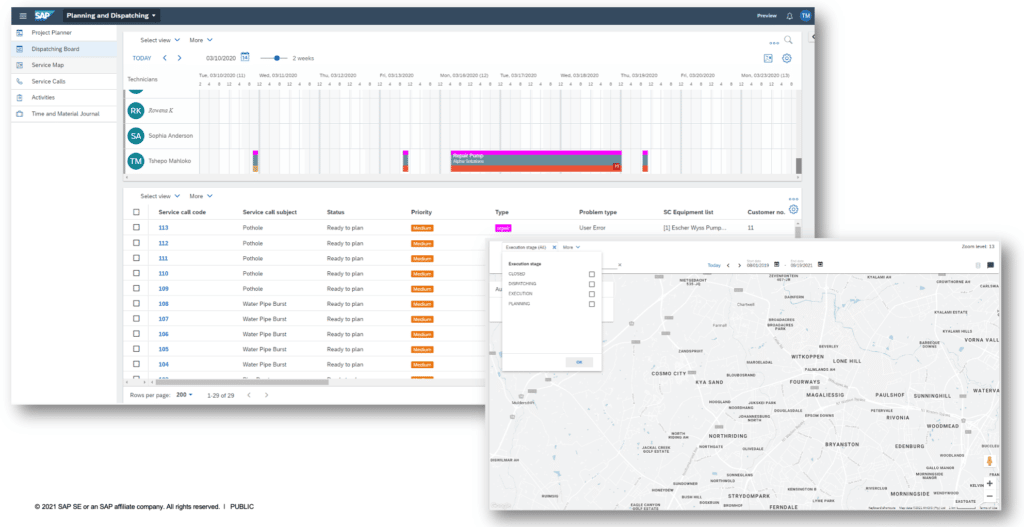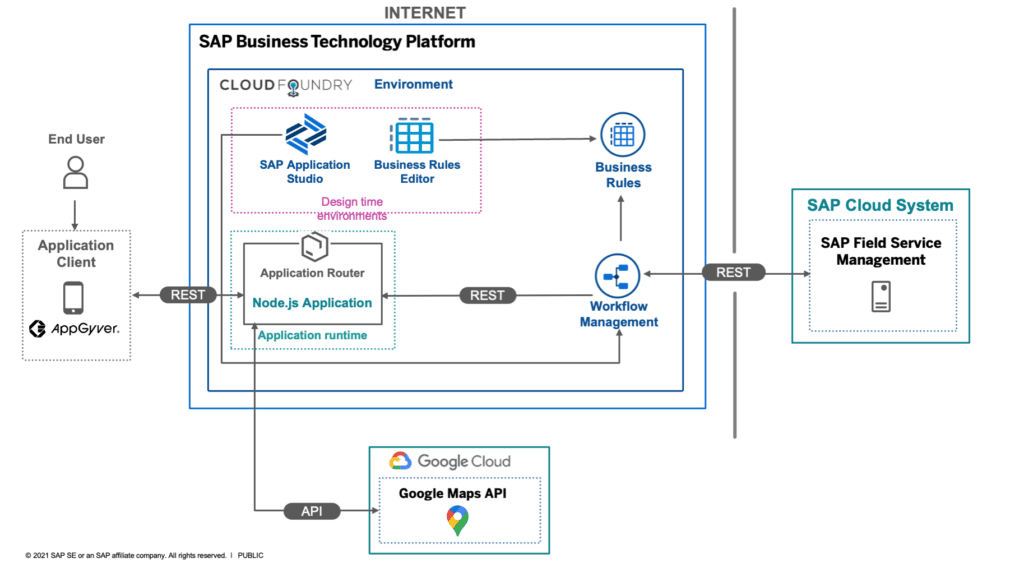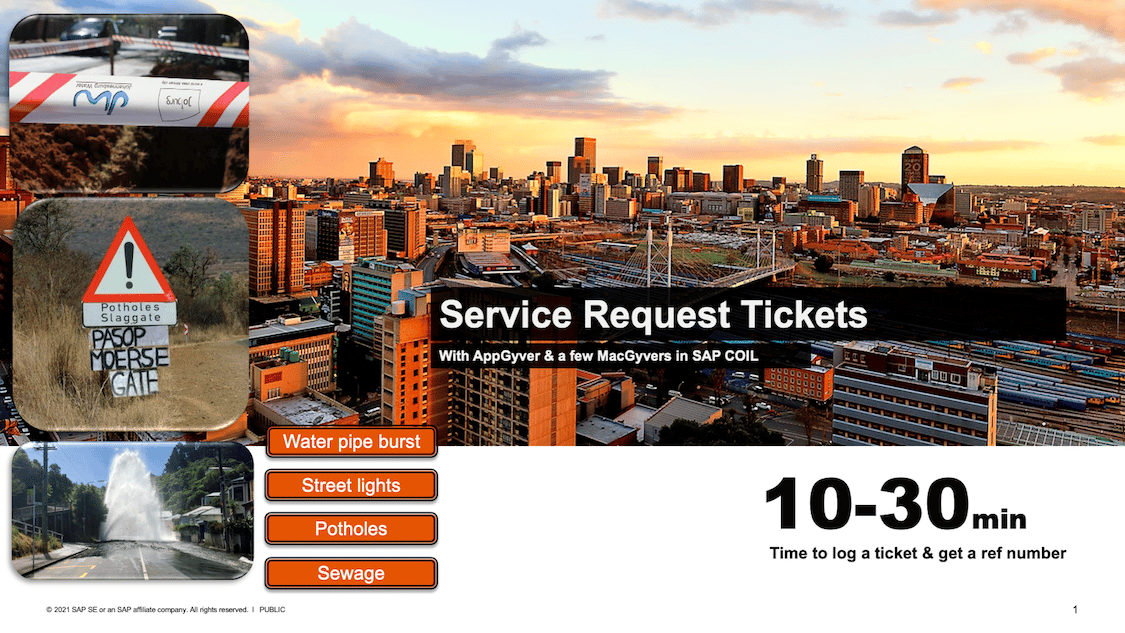With the release of SAP AppGyver, partners and developers around the globe are discovering new opportunities with #nocode.
 The SAP Co-Innovation Lab Africa hosts hackathons and Partner Innovation Days, where teams engage with new technologies and creative problem solving. Recently the Co-Innovation Lab demoed a Smart City app, which combines SAP AppGyver and SAP backend tools, including Workflow Management, to streamline service requests in Johannesburg, South Africa.
The SAP Co-Innovation Lab Africa hosts hackathons and Partner Innovation Days, where teams engage with new technologies and creative problem solving. Recently the Co-Innovation Lab demoed a Smart City app, which combines SAP AppGyver and SAP backend tools, including Workflow Management, to streamline service requests in Johannesburg, South Africa.

Tell us first about the Co-Innovation Lab and what you’re working on.
Tshepo Mahloko: I’m responsible for the Co-Innovation lab in Africa, and we are one of about 14 labs globally. We work with partners to help them build solutions on our platforms. Typically, we enable them on the SAP Business Technology Platform for instance to build side-by-side extensions for some of our business systems like S/4HANA. Sometimes the partner may have an application of their own which they would like to integrate with SAP business systems, we help with this as well amongst other things.
We provide this assistance at the moment through an offering we call #Hack2Build, which is a rapid prototyping initiative to drive early-stage inspiration, use case exploration and technology adoption for SAP partners. In the seven days of #Hack2Build partners have an opportunity to try out their ideas and put their SAP knowledge into practise by applying a combination of technologies to solve business challenges and develop innovative solutions supported by SAP experts.
The whole aim is not just about having a winner for the event, what follows is what we call the build phase, where we engage with them one-on-one to help them take their prototypes to actual solutions. In the future, we hope to host a Hack2Build event focused on low-code no-code with SAP AppGyver.
What were your roles in the Smart City demo?
Phillip Phiri: For this project I was mostly behind the scenes, getting the integration with BTP working and also with our business rules and Workflow Management. We’re trying to get as many SAP backend services to work with it, just to showcase how you can have a full stack app, but also sticking with the low-code/no-code theme, so we picked out a few tools within BTP that would go well with SAP AppGyver.
Seatile Vinolia Nakedi: I am the intern of the whole group and basically I touch on everything that the guys allow me to work on which is great, some of it strictly development as well. On the end to end solution with AppGyver, I worked with Philip in terms of the business rules and Workflow. I played with AppGyver a little bit also and enjoyed it, lots of drag-and-drop, nothing too hectic.
Sikhumbuzo Dlamini: I’m a full stack developer, so covering basically everything from front- to backend, mostly working with SAP-related technologies.
Tell us about Partner Innovation Day and the Smart City App.
Tshepo Mahloko: Partner Innovation Day is an opportunity for partners to hear from SAP on the latest updates with regards to our technology platform and partner support offerings that can help them innovate with SAP. Each Partner Innovation day has a technology focus, which in this case was low-code/no-code development with SAP AppGyver. We also built a demo to demonstrate the practical use of the technology.
In this case we wanted to demonstrate that low-code/no-code is real and that you can build a really compelling application that integrates into an SAP backend. We decided to go with a smart city use case because we felt that there are endless requirements for citizen applications within a city/municipal context, which makes it a good fit for rapid application development.
As a city, you respond to natural disasters, service requests, pandemics, and you have such a huge audience of citizens that often times requires a very close engagement through various platforms. Being able to put an application together and deploy it in a place where citizens can access it very quickly is what AppGyver promises to do.
Through this app, citizens can log service requests and get the latest update on issues logged anytime of the day, whether it’s a burst water pipe, a pothole or streetlights that are out. With the intelligence built on SAP BTP we were able to implement some automation that allows for immediate feedback for the citizen. Most of the cities would already have some sort of backend used to handle tickets, so we decided to use AppGyver for the citizen app frontend because it’s very quick to develop these type of solutions on the platform and get them in the hands of the citizens, whether they are on native or web. That’s the beautiful thing about AppGyver.

How was it working with SAP AppGyver alongside SAP backend tools?
Phillip Phiri: We really wanted to stick to the whole theme of low-code/no-code. We quickly learned that from AppGyver, we can call APIs and that was a great sign that we can get something working over here, as long as we can send data from AppGyver. Whatever payload we were getting from AppGyver, we could work with that data, format and change it.
Tshepo Mahloko: One thing we realized is when you take a picture with AppGyver, it uses your phone camera’s full might, so the file comes as a high-definition image and converting it to Base64 results in a huge payload. We were thinking about how we could reduce it, but thought it might be too complex for AppGyver and that we may need to write custom code on BTP.
Sikhumbuzo quickly looked it up and found the compress picture flow function, and within a few minutes we plugged it into our flow and we were compressing pictures. I was totally impressed by that. From the time we found the solution, to having it implemented and working in our app was about five minutes. That’s truly incredible.
Phillip Phiri: When I saw it in action, that’s when I became a believer. You could very quickly come up with an idea, drag a few components onto a screen and boom, here’s an app, and it’s fully functional. Having built mobile apps before, typically you’re looking at a week just to get your layout right, getting the button to listen to events, and doing debugging.
The value in this is huge — even in a day, you can already have an app out there. You can show it to somebody important and focus on the really important bits like core functionality and the value given to your customer or users.
 What’s most exciting for the partners using SAP AppGyver moving forward?
What’s most exciting for the partners using SAP AppGyver moving forward?
Phillip Phiri: I see this really fitting in well, especially for our hackathons. What I envision with AppGyver with the partners is that they’ll have a little more freedom to build their apps and then take advantage of that value add, which is that business logic behind the scenes that they’re really there for.
Tshepo Mahloko: I agree with Phillip on this, it will be a big hit for our Hackathons. A lot of the intelligent technologies that one might want to leverage for their solutions are available through APIs. From what I’ve seen with this demo that we built, it’s very easy to integrate and call those APIs, and get feedback with AppGyver. At the end of the day, one can focus on building the value around their solution rather than trying to hack through code just to invoke APIs from different systems and coordinate that logic.
For more information on #Hack2Build and to see upcoming events, visit: https://events.sap.com/hack2build/en/home
—
This article originally appeared on the AppGyver Blog on 10 September, 2021.



